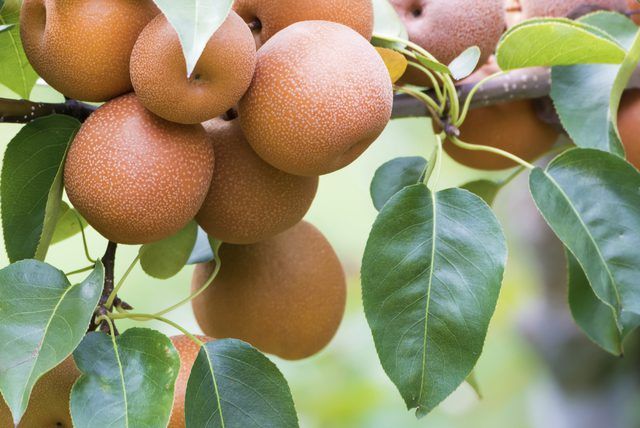Bulbs
Flower Basics
Flower Beds & Specialty Gardens
Flower Garden
Garden Furniture
Garden Gnomes
Garden Seeds
Garden Sheds
Garden Statues
Garden Tools & Supplies
Gardening Basics
Green & Organic
Groundcovers & Vines
Growing Annuals
Growing Basil
Growing Beans
Growing Berries
Growing Blueberries
Growing Cactus
Growing Corn
Growing Cotton
Growing Edibles
Growing Flowers
Growing Garlic
Growing Grapes
Growing Grass
Growing Herbs
Growing Jasmine
Growing Mint
Growing Mushrooms
Orchids
Growing Peanuts
Growing Perennials
Growing Plants
Growing Rosemary
Growing Roses
Growing Strawberries
Growing Sunflowers
Growing Thyme
Growing Tomatoes
Growing Tulips
Growing Vegetables
Herb Basics
Herb Garden
Indoor Growing
Landscaping Basics
Landscaping Patios
Landscaping Plants
Landscaping Shrubs
Landscaping Trees
Landscaping Walks & Pathways
Lawn Basics
Lawn Maintenance
Lawn Mowers
Lawn Ornaments
Lawn Planting
Lawn Tools
Outdoor Growing
Overall Landscape Planning
Pests, Weeds & Problems
Plant Basics
Rock Garden
Rose Garden
Shrubs
Soil
Specialty Gardens
Trees
Vegetable Garden
Yard Maintenance
Types of Asian Pear Trees
Asian pear trees come in two main types -- Japanese and Chinese -- based on their appearance and country of origin.

Asian pear trees (Pyrus pyrifolia) fall into two main categories: Japanese and Chinese pears. Both types produce fruit that ripens directly on the tree, and the fruit possesses similar crispness and juiciness. The two types differ greatly in terms of fruit shape and color, however.
Climate and Hardiness
In general, Asian pear trees thrive in U.S. Department of Agriculture plant hardiness zones 5 through 9, but some varieties are hardy in different USDA zones. Some Asian pears need 900 to 1,000 chill hours -- hours below 45 degrees Fahrenheit during dormancy -- to produce fruit, although most need far fewer chill hours. Choose a type that is compatible with your USDA zone to ensure good fruit production.
Japanese Types
Japanese pears come in two distinct types according to their fruit's appearance. Their fruit possesses a round shape, but some varieties' fruit has russet or rough skin that ranges in color from greenish brown to bronze while the others have fruit with smooth skin that is green or yellowish.
Russet Types
Among the most popular cultivars of Japanese pear is ‘Hosui’ (Pyrus pyrifolia ‘Hosui’), which has russet fruit and is hardy in USDA zones 5 through 9. Its fruit's golden-brown skin conceals tangy, crisp flesh with a more acidic nature than other Asian pears' fruit. ‘Hosui’ is blight-resistant and moderately heat-tolerant, making it a low-maintenance choice for home gardens.
Another suitable cultivar for home orchards is ‘Chojuro’ (Pyrus pyrifolia ‘Chojuro’), which is hardy in USDA zones 5 through 8. Its golden-brown, russet fruit is noted for its mild, butterscotch-flavored flesh and long storage life.
Green Types
Two common Japanese pear trees with green-skinned fruit are ‘Kikusui’ (Pyrus pyrifolia ‘Kikusui'), which is hardy in USDA zones 5 through 9, and ‘Shinseiki’ (Pyrus pyrifolia ‘Shinseiki’), USDA zones 5 through 10. Both cultivars require little maintenance and produce quality fruit with sweet, crisp flesh, although ‘Kikusui’ requires 500 chill hours while ‘Shinseiki’ needs only 250 to 300 chill hours.
Tip
'Shinseiki' and 'Hosui' are self-fruitful or self-pollinating while 'Chojuro' and 'Kikusui' perform best when they cross-pollinate with other kinds of pear trees.
Chinese Types
Chinese pear tree fruit possesses an oval shape or the traditional pear fruit, or pyriform, shape. Most of this type's fruit has yellowish-green skin, although many varieties' fruit develops a brownish blush as it matures.
‘Ya Li’ (Pyrus pyrifolia ‘Ya Li’) is among the most common Chinese pear varieties. Its fruit ripens in early autumn and has a sweet, succulent flavor and crisp flesh. It is a vigorous, productive tree hardy in USDA zones 5 through 10, where it requires 300 chill hours to bear fruit.
Another Chinese pear type is ‘Shin Li’ (Pyrus pyrifolia ‘Shin Li’), a cultivar noted for its large, aromatic fruit and large yield of fruit. Hardy in USDA zones 5 through 8, it is resistant to the disease fire blight.
‘Tsu Li’ (Pyrus pyrifolia ‘Tsu Li’), hardy in USDA zones 5 through 10, has large, green fruit that possesses a football-like shape. Although the fruit can be eaten immediately after harvest, it also keeps for six to 10 months, and the flesh improves with age.
Tip
Plant ‘Ya Li’ and ‘Tsu Li’ together to provide reliable cross-pollination in warm-winter areas. 'Shin Li' self-pollinates.
Asian Pear Basics
Regardless of their type, Asian pear trees require full sun, shelter from frost and well-drained soil with a pH between 5.9 and 6.5, which is mildly acidic. Many Asian pears self-pollinate but produce larger crops when two or more compatible varieties are planted together. Choose varieties that bloom at roughly the same time, and space the trees 15 feet apart.
Harvest Tips
Asian pear tree fruit is allowed to ripen on the tree. It is ready to harvest when it develops its mature color but its flesh is still very firm. Ripe fruit comes off a tree easily when pulled but is prone to bruising. So handle each fruit carefully during harvest. Store the fruit in a box lined with paper towels to protect the fruit's thin, delicate skin.
Tip
Asian pear fruit stays fresh in a refrigerator for one to three months and possibly longer, depending on its tree's cultivar.